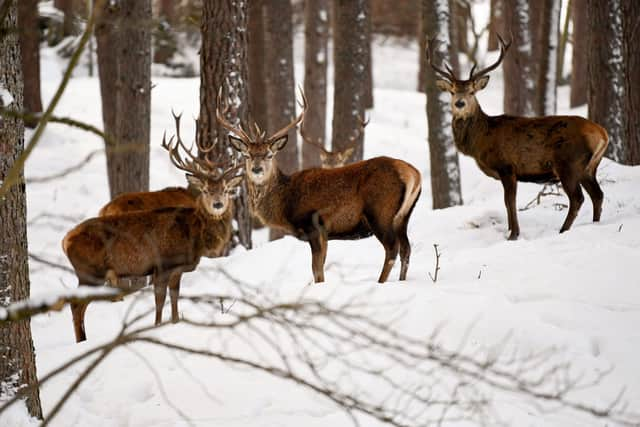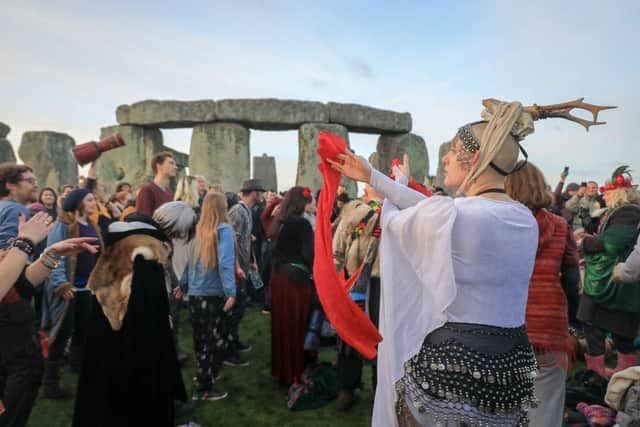When is winter 2021? Date season starts, what is the Winter Solstice, and when is shortest day of the year
This article contains affiliate links. We may earn a small commission on items purchased through this article, but that does not affect our editorial judgement.
and live on Freeview channel 276
With Christmas finally arriving later this week, many of us will have assumed that winter has already been in full swing - but that’s not actually the case.
There are two separate dates that can dictate when winter officially begins - but why, and what is the winter solstice?
This is everything you need to know.
When does winter start?
Advertisement
Hide AdAdvertisement
Hide AdThe date of when winter officially takes over from autumn will depend on whether you’re referring to the astronomical or meteorological winter.
According to the Met Office, the astronomical calendar states that winter this year has actually only began today, on Tuesday 21 December 2021, and it will end on 20 March 2022.


The Met Office explains: “The astronomical calendar determines the seasons due to the 23.5 degrees of tilt of the earth’s rotational axis in relation to its orbit around the sun.
“Both equinoxes and solstices are related to the earth’s orbit around the sun. However, the dates of the equinox and solstice aren’t fixed due to the earth’s elliptical orbit of the sun.”
Advertisement
Hide AdAdvertisement
Hide AdThe upcoming dates for the astronomical winter for the next few years goes as follows:
- Winter 2022: begins 21 December 2022 and ends 20 March 2023
- Winter 2023: begins 22 December 2023 and ends 20 March 2024
- Winter 2024: begins 21 December 2024 and ends 20 March 2025
In terms of the meteorological definition of the seasons, the first day of winter is always 1 December, and ends on 28 February, or 29 February if it’s a leap year.


Meteorologically, the seasons are split into four periods, consisting of three months each:
- Spring, which is March, April and May
- Summer, which is June, July and August
- Autumn, which is September, October and November
- Winter, which is December, January and February
“Seasons are split to coincide with our Gregorian calendar, making it easier for meteorological observing and forecasting to compare seasonal and monthly statistics,” the Met Office says.
What is the winter solstice - and when is the shortest day of the year?
Advertisement
Hide AdAdvertisement
Hide AdThe earth rotates on a tilted axis and when the axis leans towards the sun, it’s summer in the northern hemisphere, and when it tilts to the south, it’s winter.
During the winter solstice, the earth’s axis is tilted at its furthest point from the sun, making it the shortest day of the year and the longest night. This year, the shortest day of the year falls on Tuesday 21 December.
After the winter solstice passes, the days will once again begin to grow longer and longer until we reach the summer solstice, which boasts the longest day of the year, and the shortest night.
Throughout history, the winter solstice has been regarded as an important event across different cultures, as it represented the passing of the seasons and potential for rebirth.


Advertisement
Hide AdAdvertisement
Hide AdThe winter solstice is still very much celebrated in areas of the UK, with the most popular tradition drawing druids, pagans and general enthusiasts to Stonehenge to watch the sun rise.
As the sun rises behind the “Heel Stone”, which is a massive boulder of hard sarsen stone which stands separately from the stone circle, light is shone into the heart of Stonehenge.
It’s been theorised that one of the reasons behind the construction of Stonehenge was to align with the movements of the sun, and mark two of the most important occurrences in the yearly solar cycle - the winter solstice and the summer solstice.
A message from the editor:Thank you for reading. NationalWorld is a new national news brand, produced by a team of journalists, editors, video producers and designers who live and work across the UK. Find out more about who’s who in the team, and our editorial values. We want to start a community among our readers, so please follow us on Facebook, Twitter and Instagram, and keep the conversation going. You can also sign up to our newsletters and get a curated selection of our best reads to your inbox every day.
Comment Guidelines
National World encourages reader discussion on our stories. User feedback, insights and back-and-forth exchanges add a rich layer of context to reporting. Please review our Community Guidelines before commenting.
